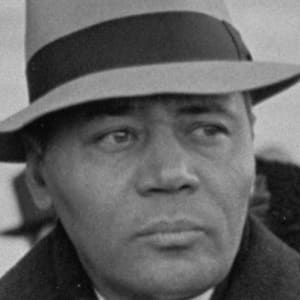
Charles H. Houston
Attorney Charles H. Houston helped create the legal precedents that led to the rejection of “separate but equal” schools for African Americans.
Synopsis
Born in 1895 in Washington, D.C., Charles H. Houston's service in the segregated army during World War I inspired him to study law. He became the Harvard Law Review's first African-American editor, the vice dean of Howard University's law school and headed the NAACP's legal fight against "separate but equal" schools, which led to the Supreme Court's decision in Brown v. Board of Education. Houston died on April 22, 1950.
Early Life
Charles Hamilton Houston, generally known as Charles H. Houston, was born on September 3, 1895, in Washington, D.C. In 1915, he graduated from Amherst College, where he was one of six valedictorians and a member of Phi Beta Kappa. He taught English at Howard University before joining the U.S. Army during World War I.
While serving in a segregated military unit, Houston saw that African-American service members were treated poorly, and could be convicted of crimes without any substantial evidence against them. Witnessing this unequal and unfair treatment made him decide to become a lawyer.
Early Legal Career
Houston attended Harvard Law School, where he became the first African-American editor of the Harvard Law Review. He graduated in 1922; the next year, he earned a Doctor of Juridical Science (S.J.D.) degree from Harvard, another first for an African American. After studying in Spain at the University of Madrid, Houston returned to Washington to practice at his father's law firm, which became Houston and Houston.
In Washington, Houston also joined the faculty of Howard University's law school. There, he taught his students to look at the law as not just a static set of rules and regulations, but as a force that could be used to promote the rights of African Americans. Houston became vice dean of the law school in 1929. He also worked to help the school gain accreditation, which happened in 1931.
NAACP Counsel
In 1935, Houston left Howard to work full-time as an attorney for the National Association for the Advancement of Colored People. At the NAACP, he designed a strategy of accumulating legal precedents against "separate but equal" education for African Americans. In one of Houston's most important cases, Missouri ex rel. Gaines v. Canada (1938), the Supreme Court ruled that it was not constitutional to give an African-American student funds to attend an out-of-state law school instead of granting him admittance to the only law school in the state.
Houston was joined at the NAACP by one of his top students from Howard, Thurgood Marshall. Health issues forced Houston to resign from the NAACP in 1940, but Marshall remained at the organization, overseeing its legal fight for civil rights. In 1954, Marshall won the court case of Brown v. Board of Education, whose ruling stated that segregated schools were unconstitutional. Marshall gave Houston credit for setting the organization on the right course to win the landmark case, saying, "We wouldn't have been anyplace if Charlie hadn't laid the groundwork for it."
Later Years
Even after leaving the NAACP, Houston continued to work for improved rights for African Americans. In the 1944 cases of Steele v. Louisville & Nashville Railroad Co. and Tunstall v. Brotherhood of Locomotive Firemen and Enginemen, the Supreme Court ruled that railway unions needed to fairly represent African-American employees. In Hurd v. Hodge (1948), Houston won the court's agreement that race could not be a discriminatory factor in the use and sale of property.
Houston died at the age of 54 on April 22, 1950, in Washington, D.C. That same year, he was posthumously awarded the NAACP's Spingarn Medal, the organization's highest honor. The Charles Hamilton Houston Institute for Race and Justice at Harvard Law School and the main building at Howard's law school, Charles Hamilton Houston Hall, were named in his honor.




